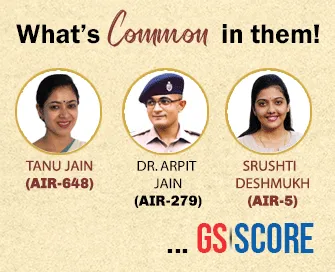

18th January 2023 (6 Topics)
Context
The Election Commission of India (ECI) proposed its new Remote Electronic Voting Machine (RVM), which would allow domestic migrants to vote in national and regional elections but has seen concerns about the logistical and administrative challenges to remote voting.
About the Remote voting Machine (RVM):
- Remote voting may take place in person somewhere other than an assigned polling station or at another time, or votes may be sent by post or cast by an appointed proxy.
- The ECI in its concept notes that the Multi-Constituency RVM for migrant voting will have the same security system and voting experience as the EVM.
|
There have been demands from various political parties that the EC should ensure that migrant workers, NRIs (Non-Resident Indians) who miss out on voting, as they cannot afford to go home during elections to exercise their franchise, should be allowed to vote for their constituency from the city they are working in. |
Why is there a Need for Remote Voting?
- Due to Unfavourable Conditions: Voters migrate from the place of their registration to cities and other places for education, employment and other purposes. It becomes difficult for them to return to their registered polling stations to cast their vote.
- Decrease in Voting Turnout: During the 2019 General elections, nearly 300 million citizens out of a total of 910 million electors didn’t cast their votes.
- Precisely it is about 30 crore voters who hadn’t voted for various and obvious reasons.
- Concerns Regarding Metropolitan Areas: The ECI also noted the concern about low voter turnout in some of the metropolitan/city areas despite the fact that polling stations are set up within 2 km for any voter in urban areas. The need to address voting apathy in urban areas was felt.
- Increasing Registrations of Unorganised Workers: There are nearly 10 million migrant workers, which is for the unorganised sector, registered with the government’s e-SHRAM portal. If the remote voting project is implemented, it will have far-reaching ramifications.
- Health Concerns: The health concerns of mainly the senior citizens also need to be discussed as they’re also becoming the main deliberation. In this context, the remote voting facility will result in increasing the voting percentage in urban areas as well as in rural areas.
Features of Remote voting machines:
- The RVM can handle multiple constituencies (up to 72) from a single remote polling booth.
- For this, instead of a fixed ballot paper sheet, the machine has been modified to have an ‘electronic dynamic ballot display’ which will present different candidate lists corresponding to the constituency number of the voter read by a constituency card reader.
- The ECI has added a digital public display unit or a monitor to act as an interface between the constituency card reader and the BU display.
- As for the commissioning process of the machine, the electronic ballot will be prepared by the Returning Officers (ROs) of home constituencies of voters, and forwarded to the remote RO for uploading in the SLU.
How does the current system of Electronic voting take place?
|
EVMs started being used on a larger scale in 1992 and since 2000, have been used in all Lok Sabha and State Assembly elections. |
- The current EVM setup has a Balloting Unit (BU) which is connected to the VVPAT printer, both of which are inside the voting compartment.
- The VVPAT is connected to the Control Unit (CU), which sits with the Presiding Officer (PO) and totals the number of votes cast, on its display board.
- Only once the Polling Officer (PO) presses the ballot button on the CU, does the BU get enabled for the voter to cast her vote by pressing the key corresponding to the candidate on the ballot paper sheet pasted on the BU.
- The VVPAT, which is essentially a printing machine, prints a slip with the poll symbol and candidate name, once the voter presses the key on the BU.
- This slip is visible to the voter on the VVPAT’s glass screen for seven seconds after which it gets dropped off in a box inside the VVPAT.
- Once a vote is cast, the BU becomes inactive till the PO schedules the next vote by enabling it again from the CU.
What are the concerns over Electronic Voting Machines (EVM)?
- The current EVM setup has a Balloting Unit (BU) which is connected to the VVPAT printer, both of which are inside the voting compartment.
- EVMs are liable for insider fraud, and trojan attacks.
- The ECI sends the EVM software to two foreign chipmakers (in the U.S. and Japan) to burn into the CPU and the manufactured chips are then sent to India for assembly into machines by the two PSUs (BEL and ECIL).
- This means that the manufacturers cannot read back the contents of the software to ensure its integrity is intact.
- Functionality tests done by manufacturers can only reveal if the machine is working properly.
What are the existing technical safeguards for EVMs?
- The ECI has claimed that EVMs and their systems are robust, secure, and tamper-proof.
- The ECI claims that the safeguards, such as;
- The sealing of machines with signatures of polling agents,
- first-level checks,
- randomisation of machines, and
- A series of mock polls before the actual voting, cannot be circumvented.
- However, domain experts and former observers have shown that vulnerabilities can arise.

